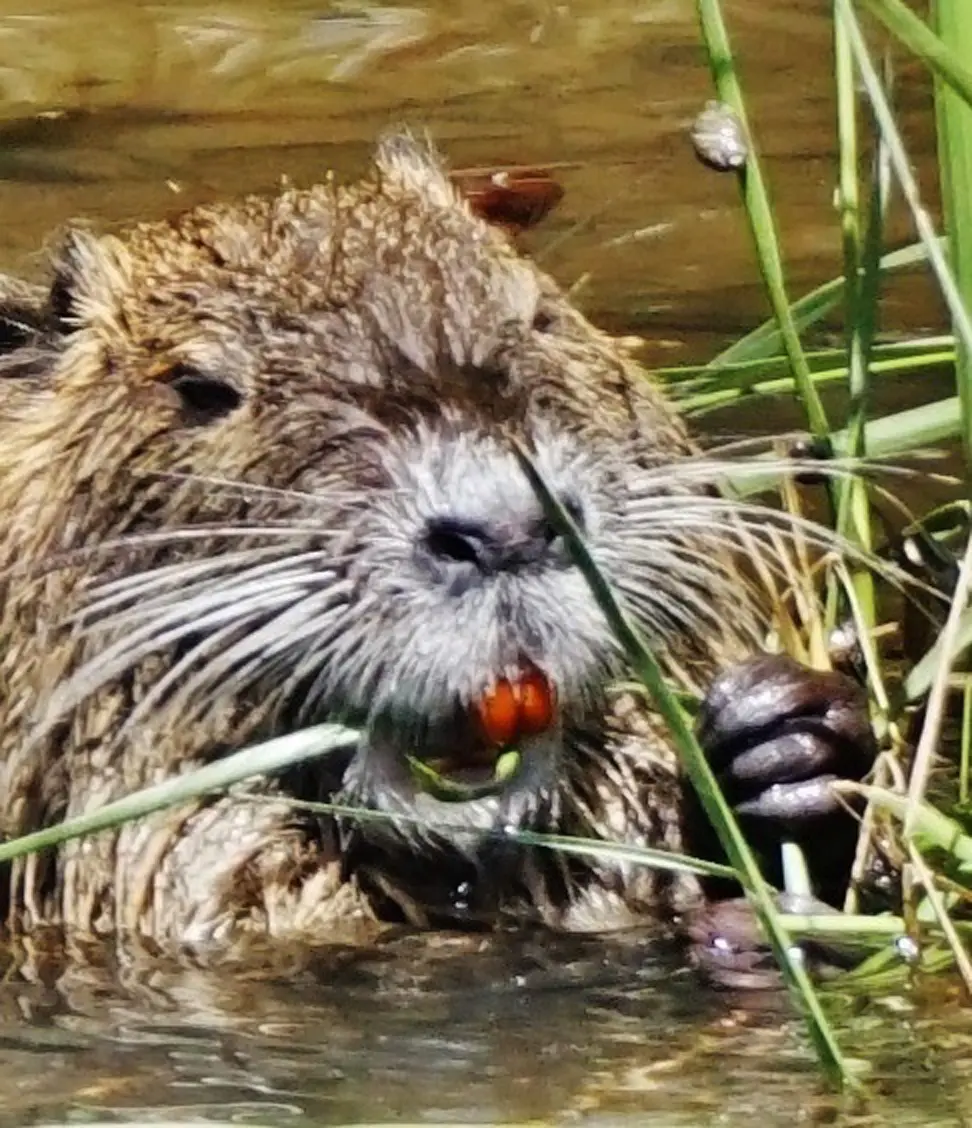Naturalists are keen to promote the value of native plants and animals within our favorite habitats. The non-native species that we encounter run the gambit of being minor nuisances to disastrous to the biodiversity that we celebrate. One such species is the nutria, Myocastor coypus, known in its native South America as coypu. Also known as nutria rats, because of their superficial resemblance to a rat, these plant-eating creatures have chewed their way across the southern U.S. since their introduction in south Louisiana in 1938. From the original 20 animals, many millions now claim dominion over the tidal and coastal fresh marshes where they make their homes.
I tell this story for two reasons. It is important to understand the impacts that invasive species can have on native species they compete with and on the habitats where they are found. It is also important that everyone be aware of our role in letting them degrade our natural resources. Humans are responsible for both purposeful or accidental introductions of most invaders – and for not doing much about it. This story is about why we need to care.
Nutria have mostly displaced the largest semi-aquatic native mammal of our tidal marshes – the Muskrat. Muskrats struggle to compete with the nutria’s voracious appetite for the same marsh vegetation and the nutria’s rapid rate of reproduction: female nutria can breed at four to six months of age and can have up to three litters a year with up to 12 young in each.

Apart from outcompeting muskrat, the impact of eating so much vegetation threatens the integrity of the habitat itself. Nutria can strip the above and below ground parts of marsh plants, leading to soil erosion and loss of habitat. They also dig extensive burrows in banks and levees, weakening them. A study of this impact on the deltaic marshes at the mouth of the Atchafalaya River in Louisiana in the 1970s showed that nutria simply prevented plants from colonizing and stabilizing the newly formed sandbanks that would normally support a growing delta.
Solutions to these impacts are not simple for an invader that, like so many other examples, grows and reproduces faster than the native organisms can adjust. Left unchecked, biodiversity drops significantly, and habitats degrade. Louisiana tried to encourage trapping and use of nutria for the fur trade and even as an abundant and nutritious source of food. Even my fellow Cajuns failed to find a place for nutria in our cuisine.
The lesson here is this. Be aware of the impacts that invasive species can have on our natural world. As always, knowledge is powerful and can help us adapt better attitudes and practices that can help alleviate or stop future invaders. Be aware and do your part. The National Invasive Species Information Center (NISIC) is a great place to learn more – https://www.invasivespeciesinfo.gov/
Thanks to my friend Curtis Makamson for the great photo of a nutria, showing their distinctive orange teeth.
Hope to see you in our great outdoors!